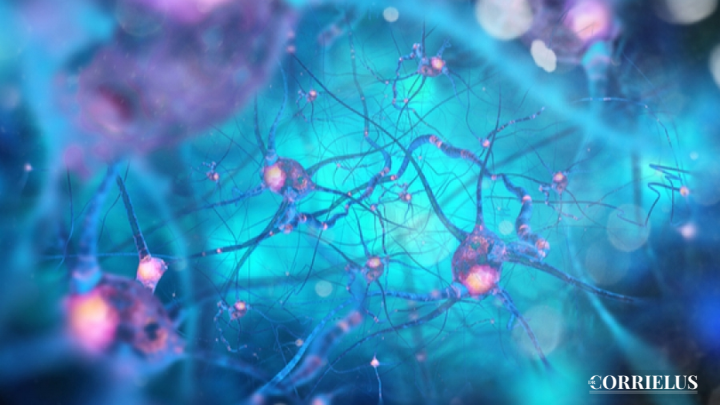In the world of physical rehabilitation and neuro rehabilitation, the concept of neuroplasticity has gained significant attention. Neuroplasticity refers to the brain’s ability to reorganize itself by forming new neural connections throughout life. This adaptability presents a promising avenue for those seeking to enhance their cognitive functions, recover from injuries, or alleviate mental health challenges. Incorporating mindfulness meditation exercises into your daily routine can contribute to this transformative process. In this blog, we will look into the ten neuroplasticity exercises that can help rewire your brain, promoting overall well-being.
Mindfulness Meditation for Anxiety
Mindfulness meditation is a powerful tool for addressing anxiety. Begin by finding a quiet space, sit comfortably, and focus on your breath. Pay attention to each inhalation and exhalation, observing any anxious thoughts without judgment. The goal is to cultivate a non-reactive awareness of the present moment. Consistent practice can help rewire neural pathways associated with anxiety, promoting a sense of calm and centeredness.
Mindfulness Meditation Exercises
Engage in specific mindfulness meditation exercises to target different aspects of neuroplasticity and for fueling your fitness. Incorporate mindful breathing exercises, body scan meditations, or loving-kindness practices into your routine. These exercises help enhance self-awareness, improve attention, and foster a positive mindset, contributing to the rewiring of your brain.
Mindfulness Near Me
Explore mindfulness resources and communities near you. Attend local meditation classes, workshops, or group sessions. Connecting with like-minded individuals can provide additional support and motivation on your neuroplasticity journey. Many cities offer mindfulness programs that cater to various skill levels, allowing you to deepen your practice in a supportive environment.
Best Mindfulness Meditation
Discover the best mindfulness meditation techniques that resonate with you. Experiment with different styles, such as guided meditation, mindfulness apps, or traditional practices. Finding the approach that suits your preferences increases the likelihood of incorporating mindfulness into your daily routine. Consistency is key to rewiring your brain and experiencing the full benefits of neuroplasticity.
Rewire Your Brain to Be Happy in 21 Days
Research suggests that it takes approximately 21 days to form a habit. Utilize this principle to rewire your brain for happiness through consistent mindfulness practice. Set a goal to engage in daily mindfulness meditation for at least 15-20 minutes. Over time, this routine can contribute to positive changes in neural pathways associated with happiness, resilience, and emotional well-being.
Daily Mindfulness
Integrate mindfulness into your daily activities. Whether you’re walking, eating, or working, practice being fully present in the moment. Mindful awareness in daily tasks helps reinforce neural connections associated with attention and focus. Over time, this can lead to improved cognitive functions and mental clarity.
Visualization Exercises
Incorporate visualization exercises to stimulate specific areas of the brain. Close your eyes and imagine a serene and peaceful place. Engage all your senses in this mental imagery. Visualization exercises can enhance the brain’s ability to create new neural connections, promoting a positive and calming impact on your overall well-being.
Neuroplasticity Games
Challenge your brain with neuroplasticity games that promote cognitive flexibility. Play puzzles, crosswords, or memory games to engage different regions of the brain. These activities stimulate neural connections, fostering adaptability and enhancing cognitive functions.
Physical Exercise
Physical rehabilitation is closely linked to neuroplasticity. Regular physical exercise not only benefits your body but also has a profound impact on brain health. Engage in activities that elevate your heart rate, such as aerobic exercises, to promote the release of neurotrophic factors, facilitating the growth of new neurons and connections.
Cognitive Behavioral Therapy (CBT)
Consider incorporating cognitive-behavioral therapy techniques into your neuroplasticity journey. CBT aims to identify and modify negative thought patterns, contributing to the rewiring of neural pathways associated with maladaptive behaviors. Working with a mental health professional trained in CBT can provide personalized strategies for cognitive restructuring.
A word from the doctor —
Moving on a journey to rewire your brain through neuroplasticity exercises requires commitment and consistency. Whether you’re pursuing physical rehabilitation or seeking to enhance cognitive functions, integrating mindfulness meditation, visualization exercises, and engaging in neuroplasticity games can contribute to positive changes in your brain’s structure and function. Embrace the potential for growth, and remember that small, daily efforts can lead to significant transformations in your overall well-being.
Schedule a consultation with Dr. Sanul Corrielus right away if you have questions about your heart health!



